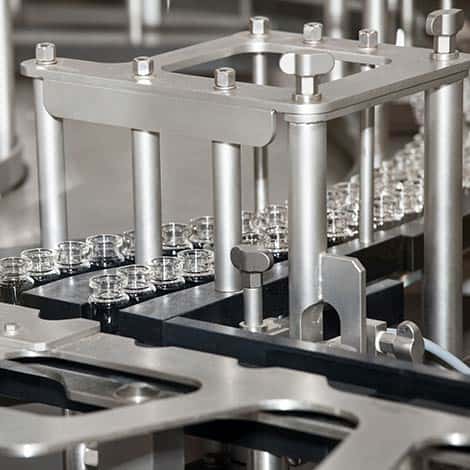
Selecting appropriate monitoring techniques is critical in controlling cleanroom contamination. This special environment demands stringent standards to ensure product integrity and safety. After all, they are responsible for some of the world’s most hygiene-critical applications, from pharmaceutical manufacturing facilities to semiconductor fabrication plants.
To minimize the risk of contamination and provide the highest level of cleanliness, strict regulatory standards are implemented for cleanroom monitoring. These regulations help provide greater control over their environment. Examples of these standards include ISO 14644-1:2015 and Annex 1 European Good Manufacturing Practices (EU GMP).
The principles set out by ISO 14644-1:2015 and EU GMP Annex 1 are important benchmarks for cleanroom monitoring. They offer a comprehensive framework for managing airborne molecular contamination, which is a critical factor in maintaining the integrity of pharmaceutical manufacturing processes.
ISO 14644-1:2015 offers a systematic approach to measuring and controlling airborne particulates in cleanrooms. Basically, it works by analyzing a volume of air to understand its particle concentration. These particles will determine the overall air cleanliness classification. Ultimately, these standards play an important role in establishing acceptable particle count limits, which impact the design, operation, and environmental monitoring of cleanrooms.
EU GMP Annex 1 complements these guidelines by establishing requirements for the manufacture of medicinal products. It focuses on the importance of microbiological controls in relation to particulate standards.
Together, these documents form a cohesive set of guidelines that encourage the implementation of effective contamination control strategies in pharmaceutical cleanrooms. Complying with the principles outlined in ISO 14644-1:2015 and EU GMP Annex 1 can achieve optimal cleanroom performance. That way, pharmaceutical manufacturers can ensure that their cleanrooms can meet stringent demands for product safety and quality.
If you are interested in learning how to implement constraints in cleanroom monitoring, we invite you to read on. Our article will discuss the differences in cleanroom classifications, focusing on the importance of controlling airborne contamination as verified through the standards mentioned above.
We will look at these standards in more detail, examining their criteria, implementation challenges, and impact on pharmaceutical manufacturing. In doing so, we can explain the role of standardized cleanroom practices in upholding product integrity and patient safety.
Maximum Permitted Tube Length
The physical setup of monitoring equipment is critical to the accuracy and reliability of particle counting in a cleanroom. According to ISO 14644-1, the length of the pipe connecting the counter to the probe should not exceed 1 meter. However, some recommendations extend this limit to 2 meters.
This provision aims to minimize the loss of particles during transportation. This ensures that the particle count accurately reflects the state of the cleanroom environment. Therefore, the selection of pipe length must pay attention to the balance between:
- Operational flexibility
- The need for accuracy in particle detection.
Concentration and Duration of Microbial Monitoring
Microbial monitoring is an integral part of assessing the biological cleanliness of cleanrooms. EU GMP Annex 1 offers comprehensive guidance on maximum concentrations for monitoring microbial activity. The report also recommends appropriate monitoring frequency and duration based on the assessed level of risk.
These guidelines serve as a benchmark for determining acceptable microbial counts. This allows facilities to implement monitoring schedules that are effective and efficient in identifying potential contamination events.
Warning and Action Limits
Appropriate settings limits of vigilance and action for particulate and microbiological monitoring results is essential to maintain environmental control and ensure process stability.![]()
Warning limits signal deviations from normal operating conditions, prompting review and increased monitoring to prevent escalation. Action limits, on the other hand, indicate significant deviations, requiring immediate corrective action.
These thresholds are critical in proactively managing the cleanroom environment, allowing timely intervention to reduce the risk of contamination.
Particle Counter Selection
Election particle counter governed by the need to meet the ISO cleanroom classification. This![]() where the maximum concentration capacity of the counter must exceed the specified ISO limits.
where the maximum concentration capacity of the counter must exceed the specified ISO limits.
Factors influencing particle counter selection include:
- Clean room environment
- Desired flow rate
- The particular particle size is of interest.
Ultimately, aligning particle counter specifications with cleanroom requirements ensures the accuracy and relevance of monitoring data. This can facilitate effective contamination control.
Understanding ISO Standards
ISO 14644-2:2015 outlines guidelines for cleanroom monitoring. It focuses on establishing the correct particle contamination alarm settings and warning limits based on data trends.
These standards provide a framework for ongoing monitoring, enabling facilities to detect and address deviations immediately. A cleanroom that meets ISO standards can maintain the required level of cleanliness to ensure that manufactured products or research conducted in that environment meets the highest quality and safety standards.
Implementing appropriate limits and guidelines in cleanroom monitoring is an important effort that underlies the effectiveness of contamination control strategies. By adhering to established standards, establishing appropriate warning and action limits, and selecting appropriate monitoring equipment, cleanroom operations can achieve the dual goals of regulatory compliance and product integrity assurance.
This comprehensive approach to cleanroom monitoring not only protects the controlled environment but also strengthens the commitment to excellence in manufacturing practices and research.
Are you looking for an Air Particle Counter for Cleanroom Monitoring?
The purpose of using cleanroom monitoring boundaries is to avoid environmental contamination through pollutants. These limits set cleanroom standards so that quality is not compromised. Apart from that, boundaries can also indicate what changes need to be made to keep the room clean.
By working in tandem, ISO 14644-2:2015 and it EU GMP Annex 1 offers a way to maintain clean room conditions, and thus, the creation of sterile products used in the medical industry. Medical products should never be compromised during the production process. Therefore, it is important to use boundaries to set boundaries around monitoring these items to ensure their quality.
Clean rooms need to be managed to ensure the level of cleanliness remains optimal. This includes temperature and humidity as well as particle levels within the chamber.
You need an environmental monitoring solution to observe particles that can cause airborne molecular contamination (AMC). Whether you’re interested in AMC monitoring tools or just want to observe particle levels, explore our tools airborne particle counter as a starting point!
Improve your cleanroom monitoring through our particle counter tool. You can rely on the quality of our products to ensure you get the data you need. That way, your clean room air will always be in the best condition.
Contact us today to learn more about cleanroom monitoring systems.
News
Berita
News Flash
Blog
Technology
Sports
Sport
Football
Tips
Finance
Berita Terkini
Berita Terbaru
Berita Kekinian
News
Berita Terkini
Olahraga
Pasang Internet Myrepublic
Jasa Import China
Jasa Import Door to Door

